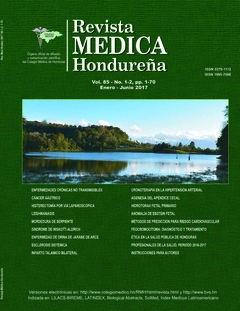Clinical-epidemiological characterization of snakebite at the Hospital Regional Santa Teresa de Comayagua, 2014-2015
Keywords:
Snake Bites, Antibiotic Prophylaxis, Snake Venoms, Occupations, Signs and SymptomsAbstract
Background. Snake bite or snakebite is a skin injury, followed by the inoculation of toxic substances with tissue damage and a condition of local and systemic pathophysiological alterations of varying severity. Objective. To describe the clinical and epidemiological characteristics of snake bites at the Santa Teresa Regional Hospital, Comayagua, January 2014 - December 2015. Methodology. Descriptive cross-sectional study. Of the 58 hospitalized cases, only 36 (62.1%) clinical records were obtained. The variables included clinical-epidemiological data, characteristics of the patient, pre-hospital and in hospital care, and personal pathological history. The information collected was entered in Epiinfo database version 7.1.5 (CDC, Atlanta). Results are presented as frequencies, percentages, ranges and averages. The personal information of the cases was handled confidentially. Results. Of 36 patients, 33.3% (12) were adolescents aged 11-19 years, the affectation by sex was 50% (18), obtaining a ratio of 1:1. 22.2% (8) the rattlesnake was identified as the ephemeral one that produced major affectations, the anatomical location most affected was the lower left limb in 33.3% (12), 66.7% (24) presented grade I - mild injury according to classification By Christopher Rodning and Audebert. 77.8% (28) received administration of antiofidic. 97.2% (35) obtained improvement on discharge. No cases of mortality were reported. Discussion: Snake bite is an unusual reason for consultation in the emergency department. This may raise questions about their treatment, especially on the use of a very specific, expensive antidote, with little distribution and potential adverse effects.
Downloads
200




